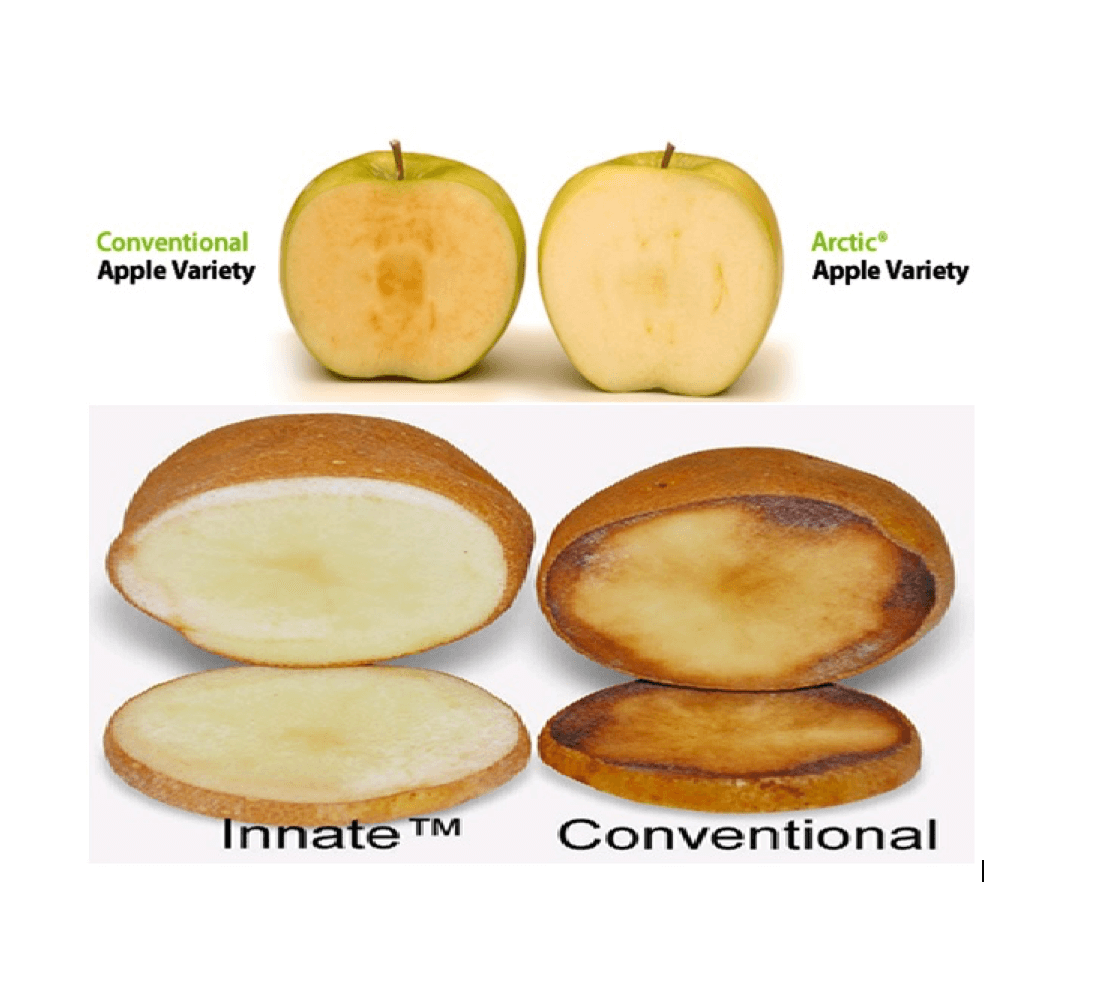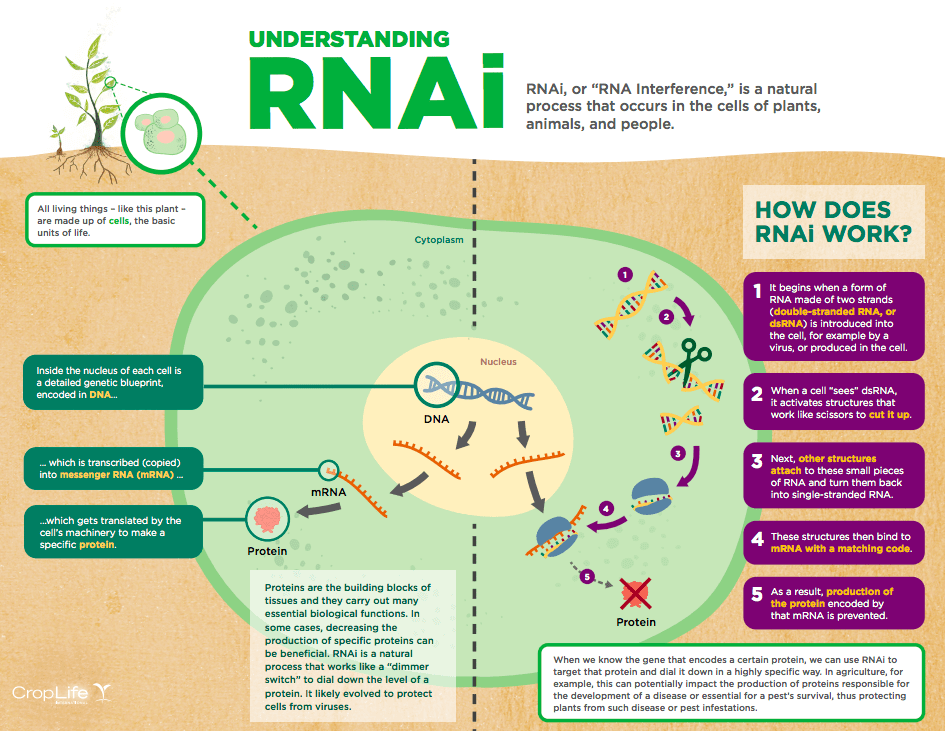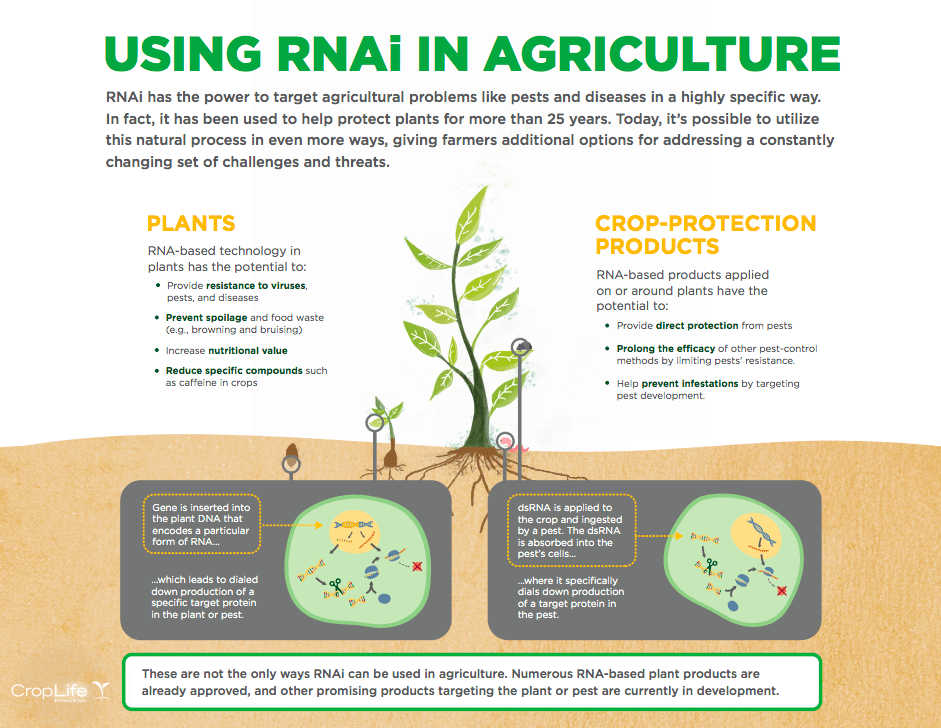RNA interference–a natural process that cells use to ‘turn off’ or silence unwanted or harmful genes–can be a powerful tool that could be used to target agricultural problems like pests and diseases. [Here is a good explanation of how RNAi works; here is another backgrounder on its applications in medicine and farming.] By inserting short sequences of ribonucleic acid (RNA) that match part of the target gene’s sequence, no proteins are produced. Since Science named it as “Breakthrough of the Year” and Fortune magazine hailed it as “Biotech’s Billion Dollar Breakthrough” in 2003, RNAi has significantly gained prominence as the method of choice for researchers sleuthing the structure and function of important genes.
It has been used since the early 1990s in personalized medicine and to help protect plants. Today, it’s possible to utilize this natural process in even more ways, giving farmers additional options to address a constantly changing set of challenges and threats.
Using RNAi, scientists have developed novel crops such as nicotine-free tobacco, non-allergenic peanuts, decaffeinated coffee and nutrient fortified maize among many others–only some of which have been commercialized. Two RNAi enabled products–the now-browning Arctic Apple and the non-bruising Simplot potato–are being sold.
Although much progress has been made, the full potential of RNAi for crop improvement remains to be realized, as the complexities of RNAi pathway, the molecular machineries and how it relates to plant development are still to be elucidated.




